Lindsley Hall
Introduction
Text-to-speech Audio
The grey-colored limestone building at 724 Second Ave. S. began in the mid-1850s as Lindsley Hall, housing the University of Nashville's Literary Department. During the Civil War, the fortress-like building was used as a hospital. The University of Nashville essentially went out of existence in the 1870s and was absorbed by other schools. A series of educational institutions occupied Lindsley Hall into the 1910s; it later served as an armory and a health center. The Nashville Children's Museum moved into Lindsley Hall in 1945 and stayed for over sixty years. The Museum relocated in the mid-1970s, and the building was repurposed as government offices for the City of Nashville. Lindsley Hall became a National Register of Historic Places listing in 1971.
Images
Front (west) and south side of Lindsley Hall in 2014 photo (Nyttend)
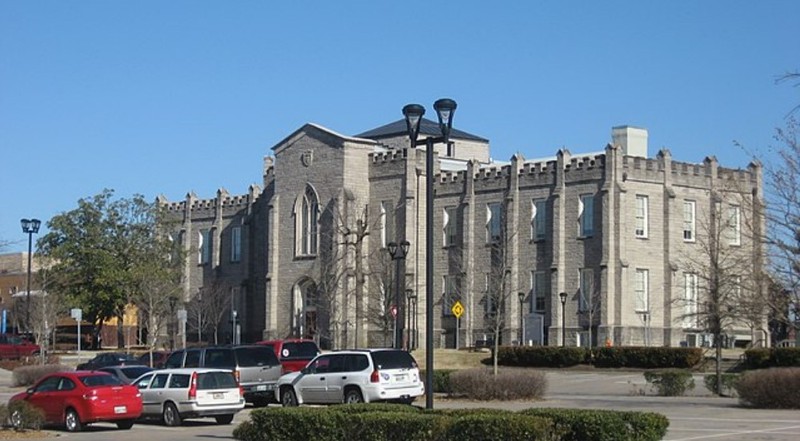
Civil War-era photo of Lindsley Hall taken by George N. Barnard
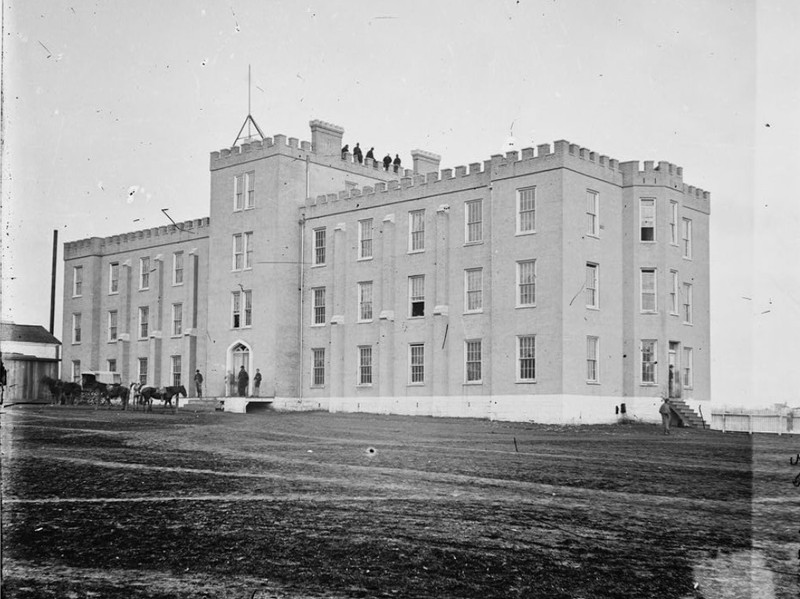
Front of Lindsley Hall in 1971 showing arched window above main entrance (Eberling)
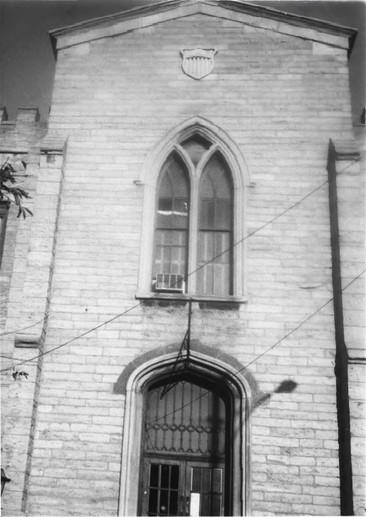
Lindsley Hall on 1888 Sanborn map of Nashville (p. 21)
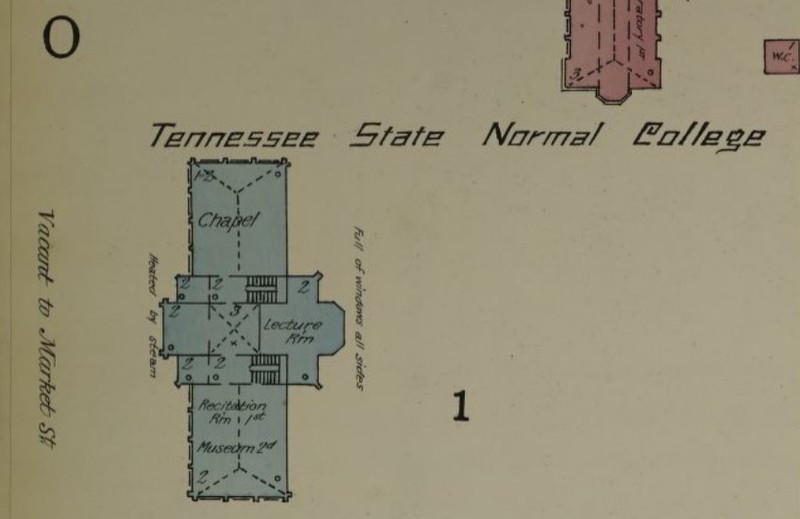
Lindsley Hall (green arrow) on campus of Tennessee State Normal College on 1888 map (Sanborn p. 21)
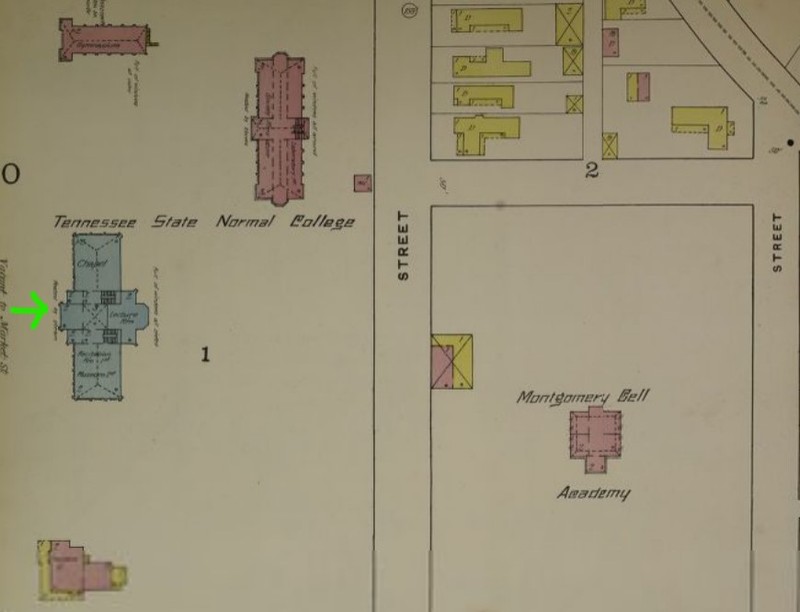
Back view of Lindsley Hall showing 20th-century theater addition (Eberling 1971 for NRHP)
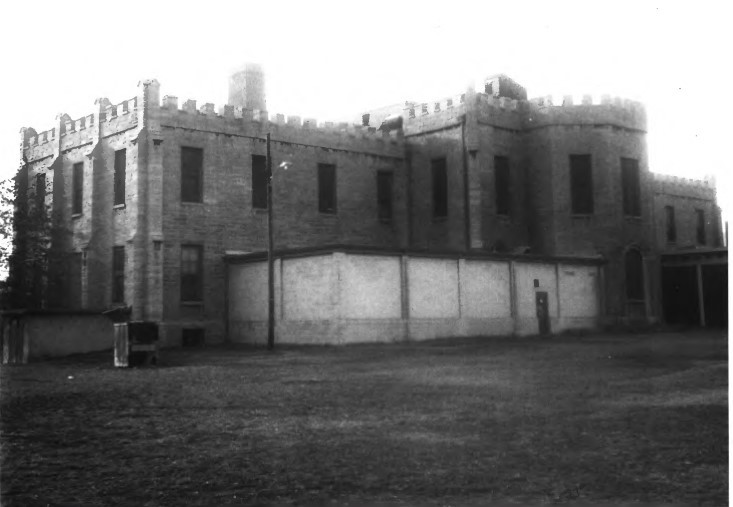
Backstory and Context
Text-to-speech Audio
Cumberland College was established in Tennessee in 1806. In the fall of 1824, the school was reorganized; each of the four classes had around seventy students. When another college of the same name was founded in 1825 in Princeton, Kentucky, it was decided to change Cumberland College in Tennessee to the University of Nashville. The president of the University of Nashville, Dr. Philip Lindsley, spoke to the men in the first graduating class in October 1826, one month before the official name change. Lindsley spoke about the need for education: "The only distinction which exists among our citizens, worthy of notice, is between the educated and the uneducated." In 1822, Dr. Lindsley was a graduate of and acting head of the College of New Jersey (later Princeton U.); the New Jersey native took the job in Nashville in 1824. Classes in Nashville were held year-round except for two breaks of about five weeks each, beginning in early April and early October.
In 1850, Dr. Lindsley resigned as President of the University of Nashville. The President in 1852 was Dr. John Berrian Lindsley, the son of Philip. The younger Dr. Lindsley also was a Professor of Chemistry and the Natural Sciences. In 1853, Lindsley Hall was added to the University of Nashville campus using the design of architect Adolphus Heiman, a Prussian native. The symmetrical building features a central block and two symmetrical wings.In 1854. courses were offered in the Literary, Law, and Medical Departments; tuition was $75, $100, or $105 per year for the departments, respectively. The senior Dr. Lindsley, also a clergyman, died in 1855 while visiting Nashville for a Presbyterian Church conference. John B. and his brothers, Adrian V.S. and Nathaniel L., were the heirs.
Educational activities stopped at the university during the Civil War. Lindsley Hall served as a hospital for the occupying Union forces by 1862. The younger Dr. Lindsley is said to have served as a surgeon during the Civil War while simultaneously protecting the university's library collection of over 14,000 books, housed in Lindsley Hall. After the war, the university never recovered to its pre-war operations. The Medical Department was made part of Vanderbilt University. The remaining departments were merged with Montgomery Bell Academy, founded by Dr. Lindsley, and the Tennessee State Normal College, established in 1875. George Peabody donated millions of dollars in 1866 for the education of Southerners and Southwesterners, placing the funds into a trust. The Trustees of the Peabody Education Fund were unable to come to an agreement with the state of Tennessee for establishment of a "normal college" to train free educators until the mid-1870s. The University of Nashville donated their land and buildings for the new normal school. Tennessee State Normal College opened on December 1st, 1875, on the former U. of Nashville campus. One of the pioneering class of fourteen women in 1875 was Louise Lindsley of Nashville.
At ceremonies for the one-year anniversary of the State Normal School, trees were planted on campus for the late Dr. Philip Lindsley, George Peabody, and a living professor, Dr. Barnas Sears. Dr. Eben S. Stearns was President of the College by 1884; the stone building was called Lindsley Hall by then. One of the college's trustees was Adrian V.S. Lindsley; his brother, John B., was Secretary of the State Board of Education of Tennessee. The 1888 Sanborn map showed four buildings on the Tennessee State Normal College campus, with two brick buildings north (gymnasium) and northeast of Lindsley Hall and a brick dwelling to the south; all three are now gone. Montgomery Bell Academy was located in a brick building across the street, east of Lindsley Hall, where there is now a grassy park, South Park. The college was renamed Peabody Normal College in 1889, and George Peabody College for Teachers in 1911 on a new campus.
Sources
Eberling, May Dean. NRHP nomination of Nashville Children's Museum/ Lindsley Hall, Nashville, Tennessee. National Register. Washington, DC. National Park Service, 1971.
Goetsch, Elizabeth K. Lost Nashville. Charleston, SC. The History Press, 2018.
Harwell, Sara. Philip Lindsley, Tennessee Encyclopedia. August 6th, 2018. Accessed September 17th, 2022. https://tennesseeencyclopedia.net/entries/philip-lindsley/.
Lindsley, A V. S. "University of Nashville." Nashville Union and American (Nashville) September 14th, 1854. , Advertisements sec, 2-2.
Lindsley, Adrien Van Sinderen et al.. "Advertisement Extraordinary." Nashville Union and American (Nashville) March 28th, 1856. , Advertisements sec, 2-2.
Lindsley, Philip. The cause of education in Tennessee: An address delivered to the young gentlemen...University of Nashville, October 4, 1826. Edition New. Nashville, TN. Hunt, Tardiff and Comp., 1833.
Parker, Betty J. George Peabody College of Vanderbilt University, Tennessee Encyclopedia. March 1st, 2018. Accessed September 19th, 2022. https://tennesseeencyclopedia.net/entries/george-peabody-college-of-vanderbilt-university/.
Stearns, Eben S. Historical Sketch of the Normal School at Nashville, Tennessee. Cincinnati, OH. Elm Street Printing, 1885.
https://en.wikipedia.org/wiki/Lindsley_Hall#/media/File:Nashville_Children's_Museum,_Lindsley_Hall.jpg
Library of Congress (LOC) Civil War photographs, 1861-1865: https://www.loc.gov/item/2018667003/
National Park Service (NPS): https://npgallery.nps.gov/AssetDetail/NRIS/71000818
LOC: https://www.loc.gov/item/sanborn08356_001/
LOC: https://www.loc.gov/item/sanborn08356_001/
NPS: https://npgallery.nps.gov/AssetDetail/NRIS/71000818
